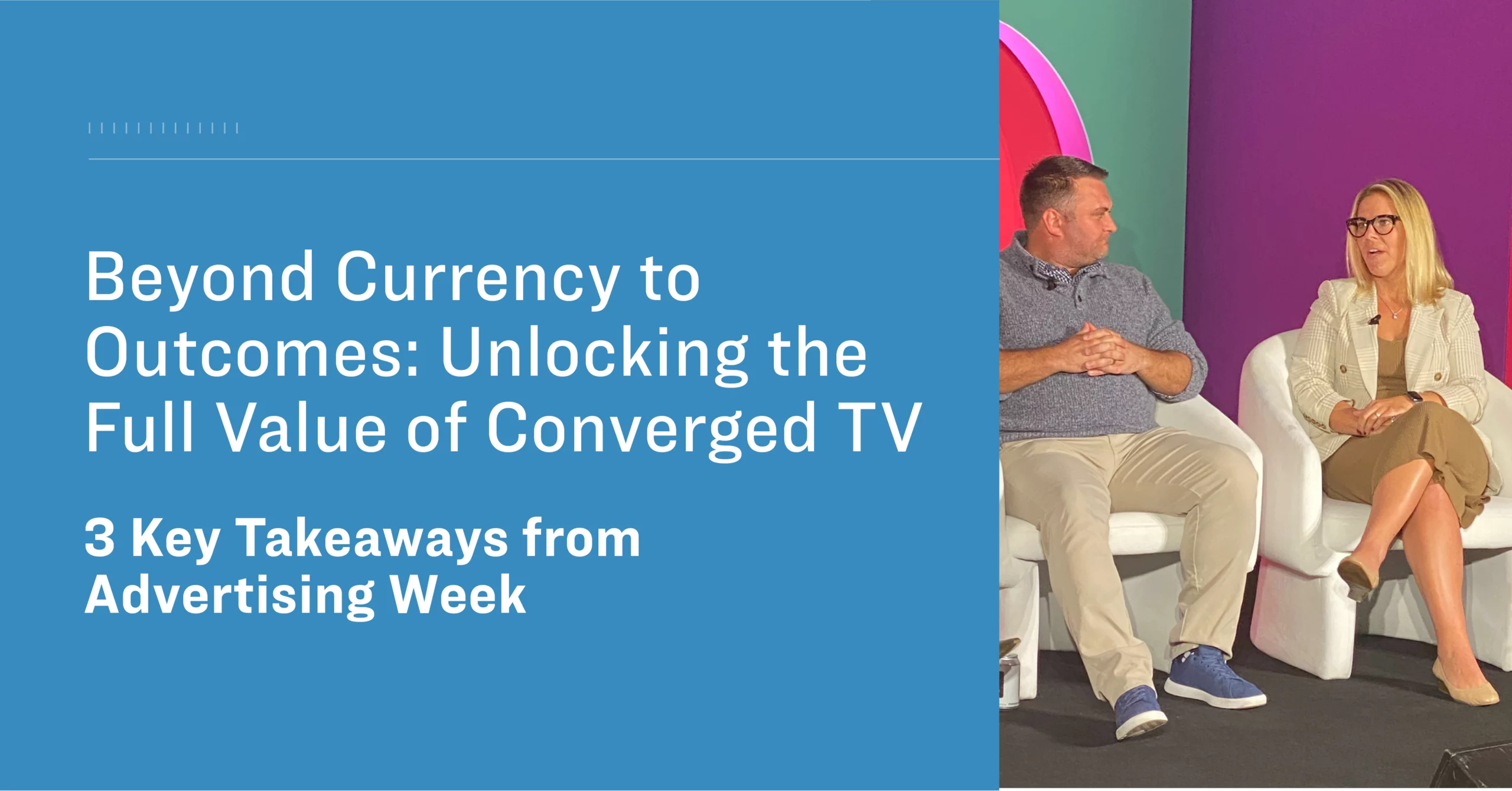The pendulum is swinging away from Linear TV, as Pixability’s proprietary research shows that 75% of US consumers will not subscribe to a cable subscription in the next few years. And with US advertisers on track to spend more than $25 billion on CTV this year, it’s hard to deny that CTV is quickly becoming one of the hottest ways to reach today’s consumers. Why? CTV is the best of both digital and linear worlds. It’s a destination for brands and advertisers to run in a premium video environment on the largest screen in the house while still allowing the use of data to be hyper-targeted.
However, in the world of CTV, we’re also seeing measurement and currency challenges making headlines, and brands continuously focusing on what matters most for them. Last week at Advertising Week, Pixability’s Chief Product Officer, Jackie Paulino, sat down with leaders across the space, including LoopMe, Pixability’s AI-driven CTV measurement partner, to unpack how brands and media partners look beyond currency to outcomes.
Check out our key 3 takeaways from the panel below!
1. The Ideal CTV Outcome Goes Beyond Counting Impressions
While reach and frequency continue to remain an important piece of CTV campaigns, for many advertisers, measuring CTV now means measuring what happens after the impression – which is the new definition of “outcome,” according to GM of Product Strategy + Commercialization at LoopMe, Rob Cukierman’s definition during the panel.
Brad Stockton, SVP of US National Innovation at dentsu, agreed and said that brands now want to understand if consumers who are exposed during a CTV campaign took an action – whether that means buying a product or seeing a lift in brand recall or intent.
This remains consistent with what we’re seeing at Pixability, as our clients are looking to prove many lower funnel metrics when it comes to CTV. In a recent campaign we ran with Wisconsin Cheese, Pixability leveraged LoopMe to measure lift in sales and saw a 7X increase in purchase intent.
2. AI-Driven Measurement is Critical to Driving Outcomes on CTV
Consumers have dictated that CTV is the “next frontier” for advertisers as they spend more and more time streaming content. As a result, we’re seeing many brands and agencies tap into the power of AI to help drive outcomes on CTV and ensure their dollars are working as hard as possible. Two notable examples in the panel include LoopMe’s Model Ecosystem and Pixability’s CTV Contextual Segments.
LoopMe’s solution removes the manual guesswork of going into an ad server and making updates within the UI. Instead, it decides autonomously about the best next impression to deliver, ensuring optimal performance.
Pixability’s Contextual Segments for CTV is a pre-bid targeting solution that leverages generative AI to determine the context of millions of videos, enabling advertisers to align their CTV ads with contextually relevant and brand safe inventory.
3. Advertisers Have Shifted Investments from Linear to YouTube CTV During the Writer Strikes
Although the writer’s strikes have ended, we continue to see the effects of delayed writing, filming, and producing. According to Stockton, CTV has been in a better place than linear during the writer’s strikes because CTV has much deeper libraries that partners can access – it’s not as reliant on finding that next hit show.
We’re also seeing this at Pixability, especially when it comes to YouTube CTV. During the panel, Paulino explained that due to the rapid expansion of YouTube videos (500 hours of content uploaded per minute), running out of inventory to buy has never been a concern. This allows advertisers to place bets on where consumer eyeballs are today vs. where they hope they’ll be next season.
Want to learn more about how Pixability’s solutions for CTV can help brands and agencies drive full funnel brand outcomes? Reach out today!

